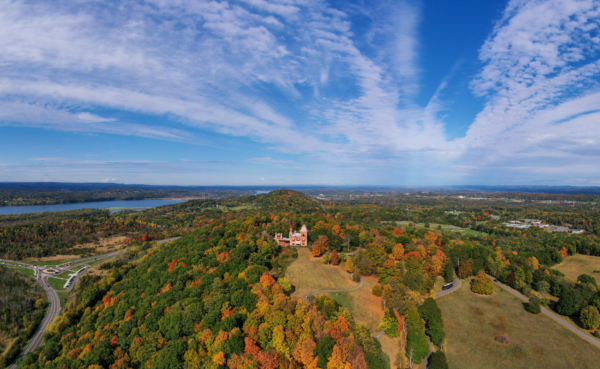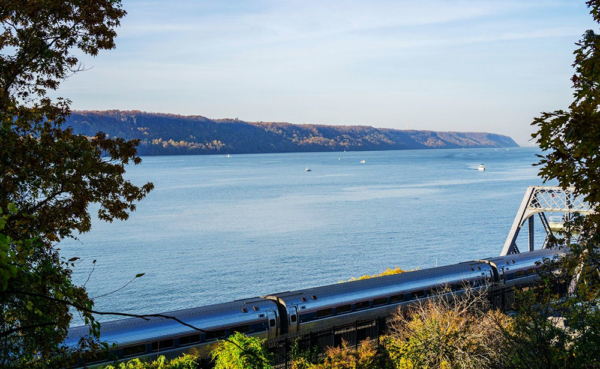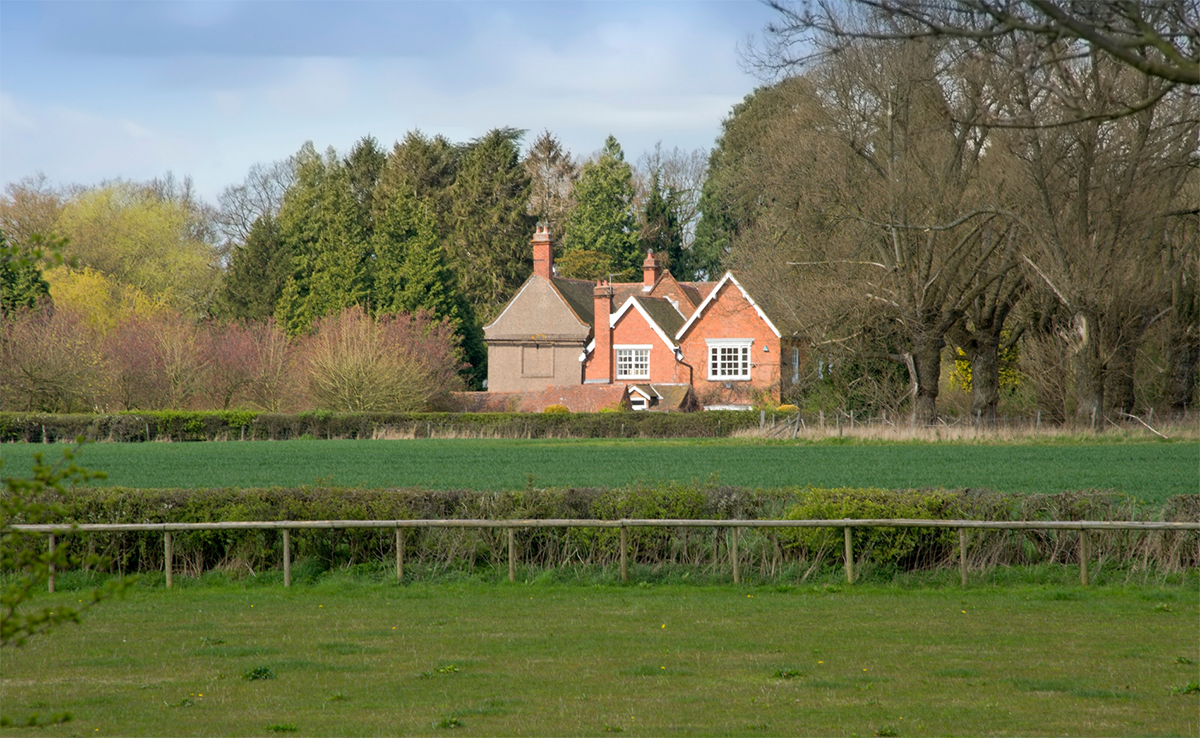The City of Hudson (and the surrounding Hudson Valley) has always been an escape hatch for people coming up from New York City. In fact, the Catskill Mountains (across the Hudson river from the City of Hudson) were among the very first “tourist destinations” in the history of the United States.
The Hudson River School
Inspirational landscapes painted by members of the Hudson River School (Frederic Edwin Church, Thomas Cole and others) brought visitors from all over the world. Today, if you go to Catskill Park’s North-South Lake area, you can hike a short distance to the former site of The Catskill Mountain House.

Frederic Church’s Olana in Hudson, NY
From about 1850 until about 1920 this hotel was known as one of the most famous hostelries in the world–it was patronized by the rich and famous for probably seventy years or more. Eventually it fell upon hard times and burned to the ground in the early 1960s. Nothing today is left but a couple of stones where the foundation used to be. The remaining outcropping of rock offers a mighty view of the Hudson Valley and as far east as Massachusetts and Connecticut. You will notice very old graffiti carved there in the rocks. When they carved “78”, they didn’t mean “1978”!
Kings and Presidents and titans of industry made their way to the Catskills then. A cog railway brought them from the town of Catskill up to the mountaintop. That railway is gone today, but for many in New York City today, the Catskills remain the closest “getaway”–only about two hours by train or car from Manhattan.
A Natural Escape
The real estate perspective on this is informed these days by a triple-helping of “escape”. Prices in the Hudson area have long been going up, even before Covid. But Covid drove the market to new heights. There are no signs yet that this is a “bubble” nor that any time soon it might burst. Of course, anything can happen. But today the market in Hudson and its surrounding area seems to have been vaulted to a higher level, and it seems very much like it’s going to stay there; and perhaps go even higher in the coming months and years.
What is driving this?
I said above that it’s a triple-helping of “escape”. Here’s why.
First, we have what has to be a permanent, underlying dynamic of general escape from the big city with its high prices and crowding. I myself used to live in the city and then bought a place in Hudson. There is little imagination required to understand the appeal of trees and quiet when your world is made of concrete and high-decibel traffic.
This appeal is not likely to change. As New York City pulls in a million fresh “New Yorkers” all the time, it also pushes many of them back out once they’ve earned their stripes. They look to suburbs if they’re commuting; and farther if they’re not. Hudson is just beyond where even the most intrepid commuter would prefer to live, if they have to go into Manhattan every day. Amtrak is a pleasant (if often late) ride, but at two hours it is more suited to weekends than to weekdays.
But the dynamics pertaining to “going up the country” is almost as old as the city itself, and remains an important element no matter what any short-term trends may or may not bring.

Amtrak train along the Hudson River
The New Commuter
Commuting brings us to the second helping of “escape”. Because while there are only a few daily commuters in the Hudson area, there are an enormous number of people here whose livelihood is generated by economic connections to the massive New York City market.
Amongst this number you can find professionals, entrepreneurs, artists, musicians, consultants and business owners of every kind. Many of them have long discovered the excellence of being able to be truly “away” when you’re home, but to be able to have that morning call and then an in-person meeting in the afternoon. No one really wants to do this every day, but many have done it on occasion–and it is that ability to get into town quickly, that sets Hudson apart from farther getaways.
This has long been a helpful dynamic to the Hudson real estate market. But what’s new and perhaps a permanent fixture is the notion of “tele-commuting”. Remote work had become a “thing” in the 2000s, driven by broadband and the “home office”, where “knowledge workers” can deliver full value to their employers and customers without leaving home.
When Covid closed offices all over the world, New York City was no exception. Almost overnight, those who would have gone to a job in Manhattan, now were told to log in from home and download Zoom. This turned many jobs into what jobholders, no doubt, would see as an endless video-conference call.
Recently I helped a young couple buy a place not far from Hudson, where one of the requirements was high-bandwidth internet because one of them was a video-editor and needed it for their job. The local cable company, eager to acquire a new customer, agreed to bring cable to their (somewhat remote) property for a manageable fee. And today that video-editor is performing all the work they had done in the city–but now ensconced upon an eleven-acre spread.
High-speed internet, sophisticated software and remote work are only going to get faster and more capable as time goes on. This clearly suggests a long-term strength in the local real estate market. People can live here and “work” anywhere. For many, that is a dream-come-true.
Covid Then and Now
With New York City substantially reducing Covid-related restrictions, we can clearly see that the spike in Covid-escapees will abate. Many offices that were closed will re-open. New York City and State workers are already back in their offices. And there is no doubt that some who decamped to the Hudson Valley will need to head back to town at some point.
But the size of the movement out of the city has been so large that even if many do move back to the city, many will not. They will have gotten a taste for what it’s like to live in a sophisticated small town (typically an oxymoron, but not in the case of Hudson); and will figure out a way to stay. And many who bought here, will keep those houses even if they can only come up on weekends.
Let’s also remember that while Covid-fears may abate, we are definitely not home-free yet (anti-vaxxers are you listening? probably not); and who’s to say that masks and social distancing may yet prove much more durable than the virus itself?
These are the three “escape” drivers: the underlying need for open spaces; technology-driven telecommuting; and covid-fear. They support a new level of housing prices in the Hudson Valley and have made it into the “sellers’ market” that it is right now.

Athens-Hudson Lighthouse
A Bubble of Sanity
There is one more element that supports the notion of a continuing strength in the local housing market. This is best described by what I call “the bubble of sanity” trend.
We hardly need to get into the ways that politics have gotten divisive over the past few years. Hudson has evolved into a progressive, LGBTQ-friendly, BLM-friendly region that reflects the choices being made by millions who live in the nation’s largest and most progressive metropolis.
There are lots of ways to leave the city and be in the country. But there are not that many places that offer the following: natural beauty; proximity to an enormous economic engine; and congenial neighbors. Can a buyer find better prices farther away or even in another state? Of course. But can a buyer feel like they are equally at home in the Hudson Valley as they were in the canyons of New York City? The answer, if you pay attention to who is coming and who is staying, is yes. This does not hold true for many another location, no matter how pretty nor how inexpensive.
It is not my business to promote “suitability” of one location over another. But to suggest there is no attraction to a place that shares your values, also would be to ignore simple facts.
Nothing is Perfect–But You Can Get Close!
Hudson and the Valley that shares its name are beautiful, peaceful and interesting places to call home. That said, the region is absolutely not without its frustrations. Winters are longer and colder than they are in New York City–the average temperature here in winter is about five to seven degrees colder than the city (and when it’s in the teens down south, that makes a difference!). Truly esoteric shopping here is certainly not as robust as it is in Brooklyn. And yes, you will need a car unless you really have no interest in anything but the house you just bought on State Street.
But these are minor imperfections compared with the sight of the Catskills during a purple sunset; or the sound of birds in your yard; or the taste of an excellent banh-mi from a food truck on Warren Street. Does this mean it’s time to buy Hudson real estate? That’s for the buyer to decide. But I will go ahead and predict that if you were waiting for prices to come down, you might be waiting quite a long while.
Interested in selling or buying a property in the Hudson Valley? Get in touch, I can help!
Disclaimer: The views expressed herein are solely those of the author, and are not related to nor endorsed by any other entity or person. They are provided for informational purposes only, and cannot be taken as any type of advice regarding the purchase or sale of real estate nor any other type of investment. The expression of these views does not in and of itself establish of any type of relationship with the reader, professional or otherwise.

